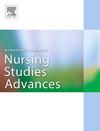暴力风险筛选工具:一项心理测量验证和可靠性研究。
IF 3.1
Q1 NURSING
International Journal of Nursing Studies Advances
Pub Date : 2024-12-05
DOI:10.1016/j.ijnsa.2024.100280
引用次数: 0
摘要
背景:急诊科病人暴力风险筛查工具的推荐缺乏高质量的证据支持:目前缺乏高质量的证据支持推荐使用一种工具来筛查急诊科患者的暴力风险:目的:证明新型暴力风险筛查工具的内容、预测有效性和可靠性,以识别有暴力风险的患者:这项回顾性风险筛查研究是在南加州一个拥有 100 张床位的城市学术安全网创伤中心急诊科进行的:九名主题专家员工和 22,583 名非危重成年急诊患者:方法:主题专家对暴力风险筛查工具的 30 个风险项目和 10 个领域的相关性进行评分。内容效度指数/平均内容效度和普遍一致性分析确定了该工具的内容效度。预测有效性采用逻辑回归法进行分析,将患者暴力事件登记表中的数据(发生或未发生事件)与暴力风险筛查工具的筛查结果(阳性或阴性)进行比较。三名护士在同一患者到达急诊科后独立使用暴力风险筛查工具对其进行评估,他们的反应是否一致决定了评分者之间的可靠性:结果:总体内容效度指数为 0.84,项目级内容效度指数和普遍一致性得分均为 1.00,表明项目相关性完全一致,专家们达成了一致共识。在暴力风险筛查工具中筛查结果为阳性的患者,表示很有可能实施暴力行为,其实施暴力行为的可能性是筛查结果为阴性的患者的 27.55 倍(95 % CI = 24.73 至 30.70)。逻辑回归模型具有显著的统计学意义(χ2 (1) = 1140.29,p < 0.0001),可解释 4.9 %(Cox & Snell R2)到 37.3 %(Nagelkerke R2)的方差,表明暴力风险筛查工具可成功预测暴力事件。计算得出的曲线下面积为 0.843(置信区间为 95%,0.812-0.873,p < 0.001),这证明暴力风险筛查工具具有区分有暴力行为风险和无暴力行为风险个体的能力。科恩卡帕统计的结果为 0.86(p < 0.001):暴力风险筛查工具有效可靠。Tweetable摘要:暴力风险筛查工具(RVST)是一种有效可靠的简短筛查工具,可用于识别有暴力风险的急诊科患者。@dhs.lacounty @ijn2024.本文章由计算机程序翻译,如有差异,请以英文原文为准。
The Risk for Violence Screening Tool: a psychometric validation and reliability study
Background
There is a lack of high-quality evidence to support the recommendation of an instrument to screen emergency department patients for their risk for violence.
Objective
To demonstrate the content and predictive validity and reliability of the novel Risk for Violence Screening Tool to identify patients at risk for violence.
Design and Setting
This retrospective risk screening study was conducted at a 100-bed emergency department in an urban, academic, safety net trauma center in Southern California.
Participants
Nine subject matter expert employees and 22,583 non-critical adult emergency patients.
Methods
Subject matter experts rated the relevance of 30 risk items and 10 domains comprising the Risk for Violence Screening Tool. Content Validity Index/Average Content Validity and Universal Agreement analyses determined the tool's content validity. Predictive validity, analyzed with logistic regression, used data from a patient incidence of violence registry (an incident occurred or did not occur), compared with the Risk for Violence Screening Tool screening result (positive or negative). Response agreement among three nurses who independently utilized the Risk for Violence Screening Tool to assess the same patients upon their arrival at the emergency department determined inter-rater reliability.
Results
The overall Content Validity Index was 0.84, and the item-level Content Validity Index and the universal agreement scores were 1.00, indicating perfect agreement on item relevance and a unanimous consensus among experts. Patients who screened positive on the Risk of Violence Screening Tool, indicating a high probability of violence, were 27.55 times more likely to commit an act of violence compared to those who screened negative (95 % CI = 24.73 to 30.70). The logistic regression model was statistically significant, (χ2(1) = 1140.29, p < 0.0001), explaining a range from 4.9 % (Cox & Snell R2) to 37.3 % (Nagelkerke R2) of the variance and indicating that the Risk for Violence Screening Tool successfully predicted violent incidents. The calculated area under the curve of 0.843 (95 % confidence interval, 0.812–0.873, p < 0.001) affirmed the Risk for Violence Screening Tool's discriminatory ability to distinguish between individuals with and without a risk for violent behavior. Cohen's Kappa statistic yielded a value of 0.86 (p < 0.001).
Conclusions
The Risk for Violence Screening Tool is valid and reliable. This standardized tool can be used in emergency departments as part of a robust violence prevention program, creating a safer workplace for both staff and patients.
Tweetable abstract
The Risk for Violence Screening Tool (RVST) is a valid and reliable brief screener to identify emergency department patients at risk for violence. @dhs.lacounty @ijn2024
求助全文
通过发布文献求助,成功后即可免费获取论文全文。
去求助
来源期刊

International Journal of Nursing Studies Advances
Nursing-General Nursing
CiteScore
5.80
自引率
0.00%
发文量
45
审稿时长
81 days
 求助内容:
求助内容: 应助结果提醒方式:
应助结果提醒方式:


